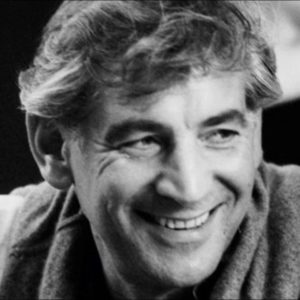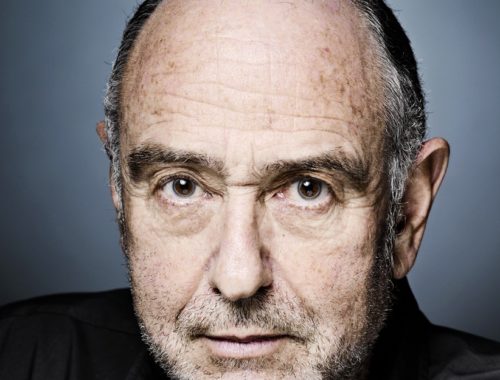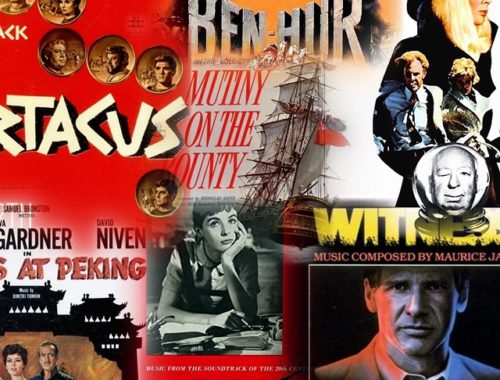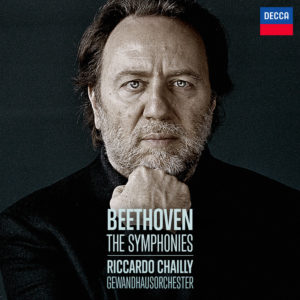GRAMOPHONE Feature: Bernstein The Composer
 There wasn’t much that Leonard Bernstein didn’t try his hand at at least once – and wanting, needing, to experience it all applied as surely to the music he wrote as to the music he conducted. “Finding himself” as a composer was something that preoccupied him for a number of years – he searched, he experimented, he dabbled in atonality, in numerology (his ballet Dybbuk), he redefined the boundaries of “theatre” turning song-cycles into theatrical happenings (Arias and Barcarolles and Songfest) and morphing a requiem mass into a universal theatre-piece cum protest song (Mass). In his music, as in life, he was always “on stage”.
There wasn’t much that Leonard Bernstein didn’t try his hand at at least once – and wanting, needing, to experience it all applied as surely to the music he wrote as to the music he conducted. “Finding himself” as a composer was something that preoccupied him for a number of years – he searched, he experimented, he dabbled in atonality, in numerology (his ballet Dybbuk), he redefined the boundaries of “theatre” turning song-cycles into theatrical happenings (Arias and Barcarolles and Songfest) and morphing a requiem mass into a universal theatre-piece cum protest song (Mass). In his music, as in life, he was always “on stage”.
But searching for the Bernstein we know and love so well when all the time he was right there for the taking was something driven by a need to first among equals with his peers. In an interview he gave to me in these pages just a year before he died he spoke candidly about the disappointment and hurt that none of his compositions had really and truly been taken seriously by contemporaries he had grown up with and even studied with. He was not regarded as “cutting edge” – his words, not theirs. But the criticism (if such it was) was unspoken.
So why did that bother him, why did he feel the need to be persuaded that his Broadway works were something more than just masterpieces of a popular genre, that West Side Story was an opera (requiring opera singers), that Candide was an operetta, not a dazzling pastiche of one. That A Quiet Place was “a tough piece” (again his words). Tougher than it needed to be, than he wanted it to be? Why was it so hard just being himself?
The irony, of course, was that the music that exuded from the life-affirming dynamo that was Leonard Bernstein needed no special pleading. Was there ever a piece more self-assured, more fully-formed in its confidence and ebullience and personal identity than his Jerome Robbins ballet Fancy Free? From it grew a musical – On the Town – which redefined the role that dance could play in musical theatre and poignantly, very poignantly, was set in the year in which it was composed, 1944, a time when American servicemen and women enjoyed shore leave that they knew all too well could possibly be their last. It is a far more important piece than Bernstein and others have ever given it credit for being. To him and those unnamed peers it was just a musical. To the rest of us it was a game-changer.
There’s irony, too, in the words of a great song from that show – “Some Other Time”: “Where has the time all gone to, haven’t done half the things we want to/ Oh, well, we’ll catch up some other time…” Betty Comden and Adolph Green wrote those words but Bernstein lived them. And had he lived a little longer he’d have seen a sea-change in attitudes to his music and maybe, too, the balance would have shifted away from conducting in favour of composition. That was his plan. He spoke to me of the beginnings of ideas, of a multi-lingual opera chronicling the lives of World War II survivors; he reeled off a list of eminent musicians he had personally promised works to. There was never any shortage of takers.
Perhaps the most finely tuned of all his gifts was his way with words – his own and those of others. He had a special way with the music of words. Coming back to musicals for a moment, his five Broadway shows all marked the start of a long and determined quest to establish and propagate a very particular brand of American Opera (“Music Theatre” might have been a better catch-all term), something that would propel the American lyric stage to new and exciting places. His last piece for that genre – 1600 Pennsylvania Avenue (written with Alan Jay Lerner) – was blighted by the pressure on Bernstein’s time and an over-extension of ambition: democracy enshrined in the history of one building. But a new direction was proclaimed in the score and the way forward would be marked out (as Bernstein always predicted) by the likes of Stephen Sondheim. And while we’re rewriting the history of American Music Theatre one can only wonder at what Lenny would have made of Lin-Manuel Miranda’s Hamilton? It’s the sort of piece one might imagine him imagining whilst going through his Hip-Hop phase.
He embraced music in all its diversity and gravitated to pieces where he might rejoice in some legitimate genre-hopping. Songfest sings America in ways that 1600 Pennsylvania Avenue, hopelessly bogged down by its own pretensions, failed to do. Songfest celebrated the American Bicentennial by looking at the diversity of the nation – and the challenges therein – through the eyes of 13 diverse poets. The music was refracted through their sensibilities so that the secretive expression of Walt Whitman’s sexuality – “To What You Said” – became Lenny’s Morgen with a solo cello songfully expressing what the words could only subtly allude to. And because everything, Bernstein truly believed, came from somewhere, note how the trio of female voices assigned to Anne Bradstreet’s poem “To My Dear and Loving Husband” is so redolent of the quartet of female voices concluding act two, scene one, of Britten’s Peter Grimes. Those women were also reflecting on their menfolk. Surely, then, a discreet “homage”. Remember Bernstein conducted the American premiere of Grimes.
It’s no secret that this commentator regards Mass – A Theatre Piece for Players, Singers and Dancers – as Bernstein’s most important and far-reaching work, not just because of its challenging stance on religious dogma and, more importantly, the relevance of it to us all, collectively and individually, as human beings, but the way in which it puts music at the sharp end of that challenge celebrating its universality, its ability to transcend all social, political, linguistic, and indeed religious divides. The Lord’s Prayer becomes a 12-tone row from which a torch song, a show tune, a bluesy or rocky anthem might emerge. Music can say anything any way it likes – that’s Bernstein’s creed – and in Mass he doesn’t just say it, he does it. It’s the piece in which he truly puts his money where his mouth is.
Bernstein always enjoyed the gamesmanship of composition – the technical processes by which he could truly express how he felt and what he hoped to communicate. Sometimes, if he was trying too hard, the “cleverness” was in danger of obscuring the expressive intentions. In Dybbuk I hear the techniques more than I hear the music. And conceiving his opera A Quiet Place as a quasi operatic symphony with each of its four acts cast as a movement of individual character underlined the process more than it did the emerging drama. In other words, technique dictated the drama as opposed to the drama dictating the technique.
But equally his grasp of variational techniques in two of his finest works – Serenade for Violin, Strings and Percussion and Symphony No 2 “Age of Anxiety” – could hardly serve his purpose more eloquently. Both are inspired by literary works: Plato’s Symposium on the nature of love and W H Auden’s dazzling epic poem The Age of Anxiety. Both excite musical debate and development. The heart of the Serenade is an aching slow movement “Agathon” but its thematic derivation is what gives it such resonance. Even the unsuspecting untutored listener will subliminally pick up on how the transformation of a single thematic idea can encompass such diversity of mood and emotion.
With the Second Symphony (with its self-identifying solo piano part) Auden’s search for answers to perennial questions about our existence is philosophically mirrored by Bernstein’s ingenious compositional trick of making something more evolutionary of his sets of variations. Each variation picks up on the tail-end of the previous one using only the concluding phrase as a starting point for the next. So the past shapes the future but each time it does there’s a new beginning.
Bernstein loved new beginnings. Many of his works end with a moment of catharsis, a new beginning forged from the heartache and disappointment of what has gone before. He was, to my mind, a glass half-full kind of guy. And that spirit of optimism infuses so much of what he achieved in his music. The end of the Second Symphony is a new day thunderously dawning, another long walk to the bright horizon – like longshoreman Marlon Brando at the close of On the Waterfront (Bernstein’s one and only film score); the kinship is inescapable. Then there is the healing chorale at the close of Mass, the major/minor sadness and hope of the closing measures of West Side Story and the hymnic “Make Our Garden Grow” (the best of all possible tunes) at the close of Candide. Things will be OK. They have to be OK.
Bernstein once said that to achieve great things two things were necessary: a plan and not quite enough time. Would that those words had not turned out to be quite so true.
You May Also Like

Claude-Michel Schönberg in conversation with Edward Seckerson
02/02/2019
GRAMOPHONE: From Where I Sit – September 2019
12/09/2019

